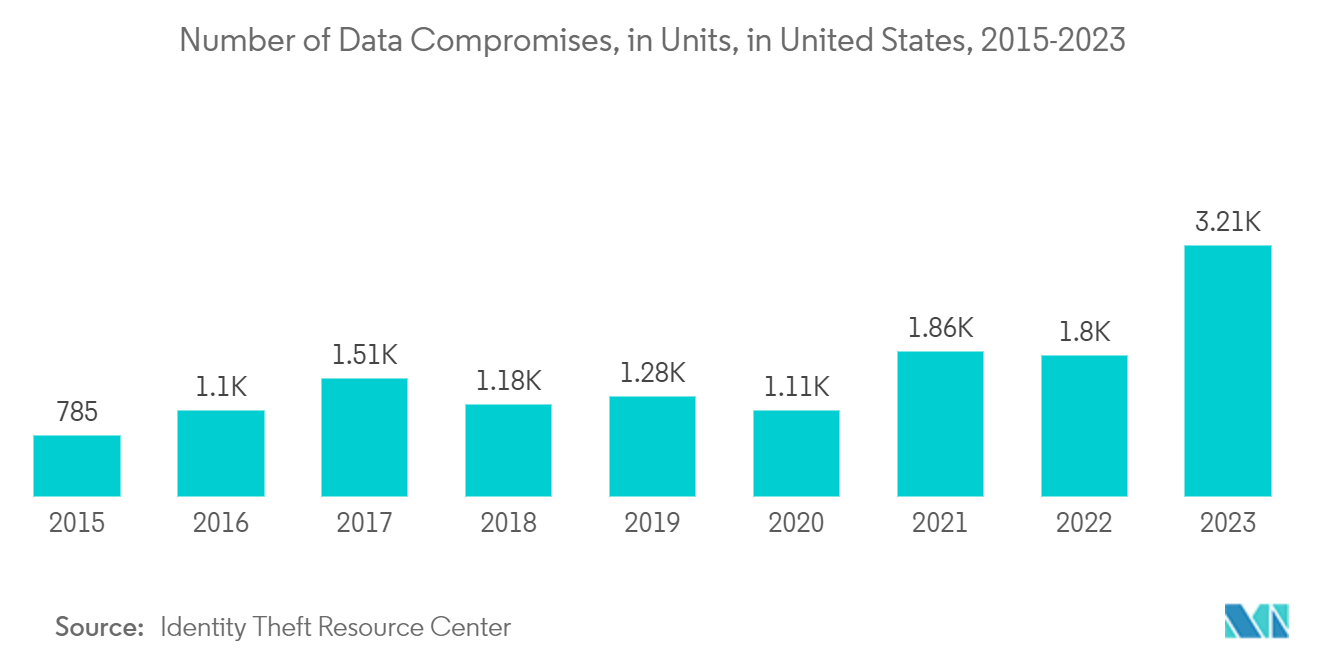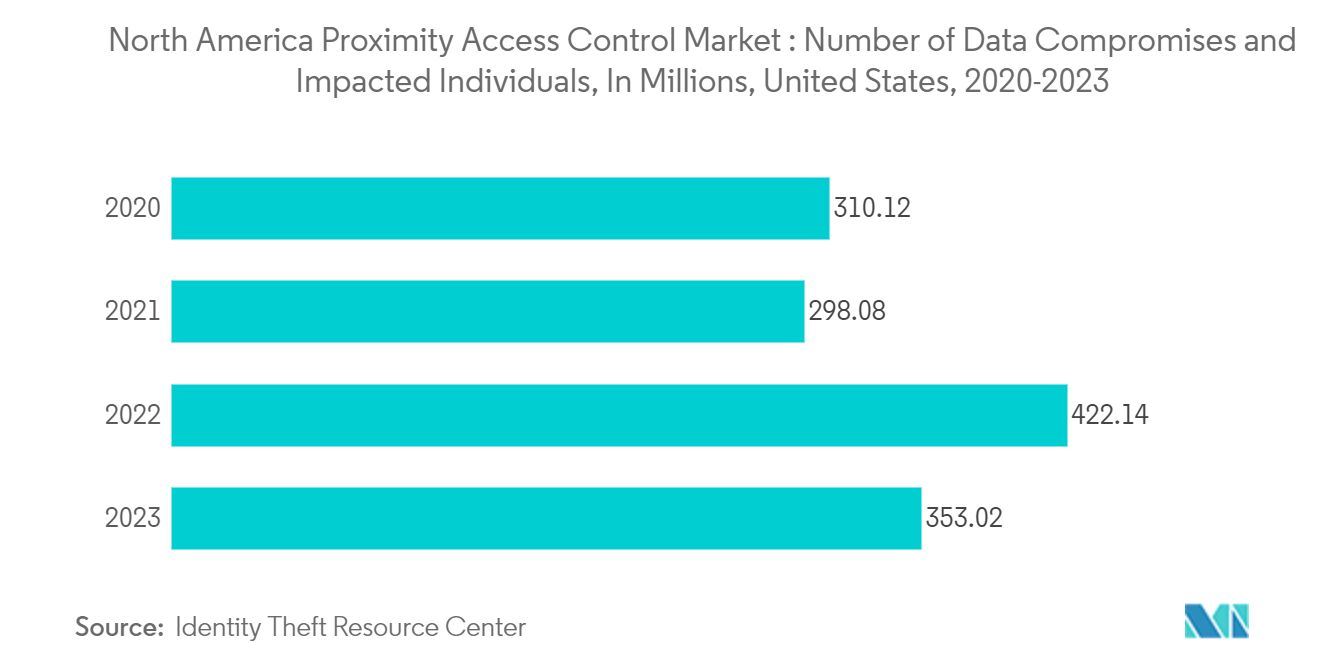Market Trends of North America Proximity Access Control Industry
Card-based Systems are Expected to Hold a Significant Market Share during the Forecast Period
- Card-based systems account for significant market share and are typically operated with a scanner that verifies the barcode or chip of the user's card. Card-based systems are popular among buyers due to their versatility in various industries, as they can be integrated with computer systems, door systems, ATM systems, and safes.
- The growth of card-based systems has been accelerated by the need to modernize access systems and recognize the convenience and speed of card entry over keypad entry. According to Identity Theft Resource Center, in 2023, the United States recorded 3,205 data compromise incidents. In that same year, data breaches, leaks, and exposures collectively impacted over 353 million individuals.
- The access control industry is witnessing a dramatic increase in product technological innovation and revenue. The development is mainly attributed to the increasing demand for online digital solutions among B2B buyers.
- Access control technology is expected to advance significantly soon, particularly as the use of intelligent technology increases in both the residential and commercial sectors. These factors are because daily life is increasingly reliant on automated technology, making the access control industry a highly crucial market to enter. A prime example is the new credit card reader with cameras, which was introduced at Wal-Mart stores in Walt Disney World in the United States in August 2023. This card reader has a tap-to-pay touchpoint along its top, enabling customers to complete transactions using their magic bands, mobile devices, or tapped-enabled cards.
- Card readers can be connected to various transportation systems, including automated fare collection and ticketing applications. This integration facilitates the entire transportation system, making it more efficient and interconnected. As of March 2023, commuters in the Montreal-area transit system can charge their OPUS cards through a smartphone, provided the ARTM progresses with a planned project. Currently, OPUS cards can be reloaded at subway stations, at various points of sale, and online using a computer and an OPUS card reader.
- Organizations are investing in card readers to optimize operations and enhance the customer experience. For instance, in December 2023, Barcodes Group broadened its range of environmentally friendly, sustainable products by introducing EcoPass Access Cards. Crafted from 85% pre-consumer recycled plastic and featuring a PVC laminate overlay, EcoPass cards provide the same level of durability and printing quality as traditional PVC technology cards, all the while decreasing the use of single-use plastic with each card produced.

The United States is Expected to Witness Significant Growth during the Forecast Period
- Access control technology has seen a significant transformation over recent years. The country's urban regions have made remarkable strides in developing security systems, governmental buildings, IT centers, and commercial premises. Due to increased crime in urban areas, several commercial premises, including IT companies, businesses, and data centers, are implementing access control systems to safeguard personnel, prevent data breaches, and record employee entry and exit times.
- Implementing access control solutions, such as biometric scanners, facial recognition, iris recognition, and fingerprint recognition, offers a heightened level of security due to the verification of an individual's unique biological characteristics. These features eliminate the possibility of unauthorized individuals obtaining access through stolen credit cards or passwords, thus reducing the risk of unauthorized access.
- As the use of access control solutions continues to grow, the government has also taken an interest in safeguarding its assets. Numerous governments in the United States have implemented temporal access control systems to specific commercial or public facilities and restricted access to the public at particular locations.
- Several governments and security firms must increase security features in their organizations by deploying biometric scanners due to increased cyber and malware assaults in metropolitan areas. As a result, this further fuels the expansion of the US proximity access control market.
- Due to the increasing prevalence of cyber and malware incidents in urban areas, governments and security firms increasingly require card-based RFID technologies to enhance the security of their businesses. This growth contributes to the area's overall expansion of access control market segments.
- In 2023, there were 3,205 instances of data compromises in the United States. A significant number of individuals, totaling over 353 million, were affected by these data compromises, which encompassed incidents such as data breaches, leakage, and exposure. Such factors are expected to bring more demand for access control systems.


